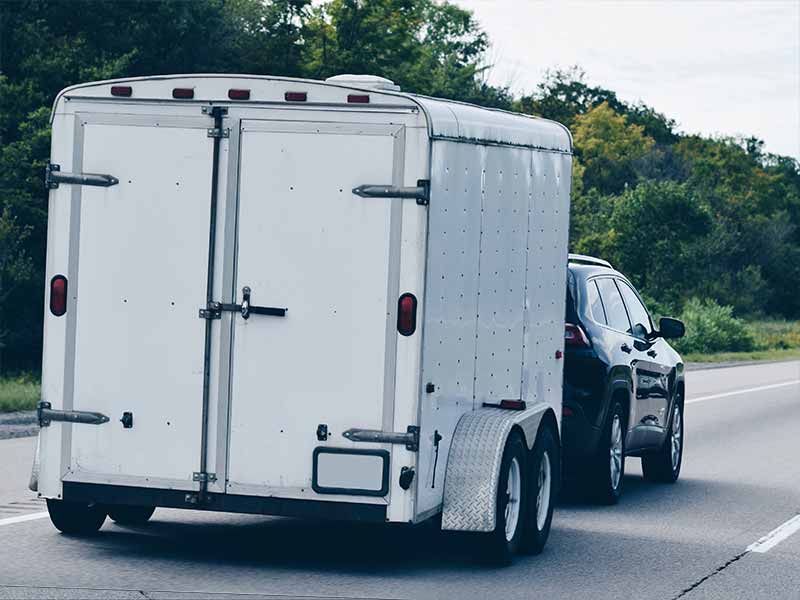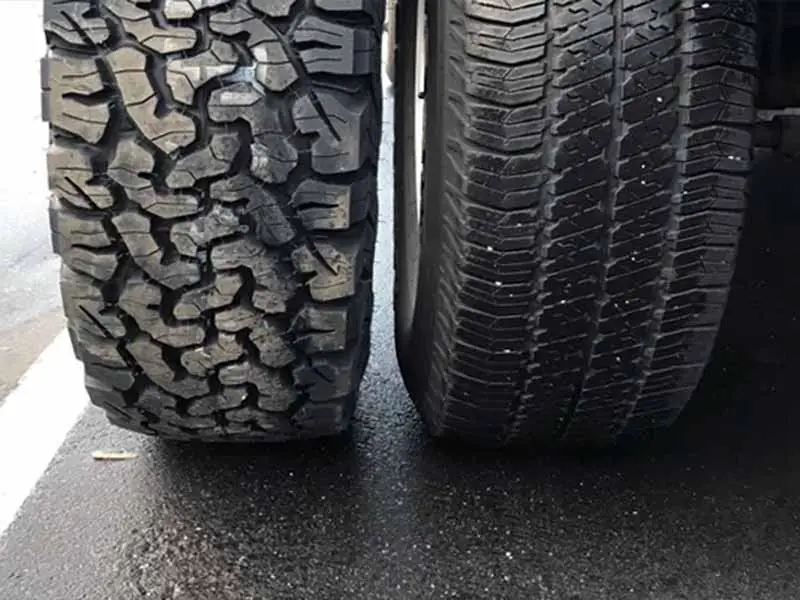When it comes to equipping your vehicle with the right tires, understanding load ranges is like knowing the weight limit of a bridge you’re about to cross. It’s not just a technicality—it’s the key to safety, performance, and the integrity of your ride. If you’ve ever wondered about the specifics of Load Range D on a tire, you’re in the right place to get clear, expert insights.
What Is Load Range D On A Tire?
Load Range D on a tire indicates a weight capacity of up to 1,220 pounds per tire at a specified tire pressure, usually around 65 psi. It is a classification used primarily for light truck tires that require a balance between everyday driving and the ability to carry heavier loads.
In this article, we will dissect what Load Range D means for your tires, how it compares to other load ranges, and why it matters for your vehicle’s performance and safety.

What Is Load Range?
In the world of tires, particularly for those used on light trucks and vehicles that haul heavy loads, the term “load range” is pivotal. While it’s not a term you’ll deal with often for regular passenger car tires, it becomes increasingly relevant when selecting tires for heavier-duty applications.
Passenger Tires Vs Light Truck Tires
For standard passenger cars, the focus is typically on the tire’s size and speed rating, as these vehicles are not usually subjected to the stresses of heavy loads. However, when it comes to light truck tires, which include all-terrain and off-road tires, the load range becomes a critical specification:
- Passenger Tires: These are designed for comfort and efficiency for everyday driving. The load range is not commonly a major concern because passenger vehicles are not intended for heavy hauling.
- Light Truck Tires: These tires are identified with an “LT” marking and are built for durability and strength. They are essential for vehicles that carry heavy loads or tackle challenging driving conditions, such as construction trucks, pickups used for towing, and vehicles that venture off-road.
Why Is Load Range Important for Light Truck Tires?
The load range for light truck tires is crucial for several reasons:
- Added Strength: Light truck tires with a higher load range are constructed to withstand the extra weight and stress of heavy cargo.
- Durability: Tires with the appropriate load range for the vehicle’s use are less likely to suffer from premature wear and tear, which can be caused by overloading.
- Safety: Ensuring that your light truck tires have the correct load range is vital for safe vehicle handling. Overloaded or underinflated tires can lead to tire failure and potentially hazardous driving conditions.
In essence, the load range on a tire informs you about the tire’s capacity to carry weight and its ability to withstand the pressure of heavy loads. For light trucks and vehicles used in more demanding conditions, selecting the proper load range is not just a recommendation—it’s a necessity for safety, performance, and longevity of your tires.
Load Range and Ply Rating Chart
| Load Range | Ply Rating | Max Load Carrying Air Pressure |
| Standard Load (SL) | 4 | @ 36 PSI |
| Extra Load (XL) | 4 | @ 42 PSI |
| C1 | 6 | @ 50 PSI |
| C2 | 6 | @ 35 PSI |
| D1 | 8 | @ 65 PSI |
| D2 | 8 | @ 50 PSI |
| E1 | 10 | @ 80 PSI |
| E2 | 10 | @ 65 PSI |
| F1 | 12 | @ 95 PSI |
| G | 14 | @ 110 PSI |

Load Range D: A Deep Dive
In the intricate landscape of tire specifications, Load Range D stands out as a key term for owners of light trucks and utility vehicles. But what does this range entail? Let’s simplify it.
Load Range D and Weight Capacity
Load Range D is fundamentally about the weight a tire can handle. It specifies the maximum load that can be safely supported by a tire when it is inflated to its optimal pressure. This becomes critical for vehicles that are expected to perform under the extra burden of heavy loads.
Load Range D Weight Capacity: Generally supports up to 1,220 lbs per tire at maximum air pressure. This capacity ensures the tire can bear substantial weight without suffering damage or excessive wear.
I always remind drivers to account for the total weight they expect to carry, which includes the vehicle’s cargo, passengers, and any additional equipment or towing. Choosing the right load range is essential to avoid overburdening the tires.
Ply Rating and Its Significance
The term ‘ply rating’ harks back to a time when tires were constructed with multiple layers of material. More layers meant a stronger tire. Though modern tires have moved beyond this construction method, the ply rating concept persists.
Load Range D Ply Rating: Typically referred to as “8 ply rated,” Load Range D tires don’t actually have eight layers. Instead, this rating signifies the tire’s comparative strength to an 8-ply tire of the past.
I encourage individuals to view the ply rating as a gauge of the tire’s toughness and capacity for weight and stress. A higher ply rating translates to a tire designed for greater demands.
Recommended Tire Pressure for Load Range D
The right tire pressure is crucial for optimal tire performance and longevity.
Load Range D Tire Pressure: Most Load Range D tires require about 65 PSI to achieve their best performance. However, this can vary depending on the specific tire and vehicle requirements.
A common problem I encounter is tires that are not inflated correctly. Keeping your tires at the proper pressure is key for safety, fuel efficiency, and extending the tire’s life.
Speed Rating and Load Range D
A tire’s speed rating indicates the maximum speed it can safely maintain. For Load Range D tires:
Load Range D Speed Rating:
- Q: Up to 99 mph (160 km/h)
- R: Up to 106 mph (170 km/h)
- S: Up to 112 mph (180 km/h)
- T: Up to 118 mph (190 km/h)
These tires are typically used on vehicles that may not need to travel at high speeds but do require the ability to carry significant weight. While they may not have the high-speed capabilities of some passenger car tires, Load Range D tires are engineered for carrying capacity and endurance.

Load Range D1 Vs D2
When it comes to Load Range D tires, the designations D1 and D2 refer to the maximum air pressure the tire can sustain, which is a crucial factor in determining the tire’s load-carrying capacity.
Key Differences
- Maximum Air Pressure: Load Range D1 tires have a maximum air pressure of 65 PSI, while Load Range D2 tires have a maximum air pressure of 50 PSI. This difference in air pressure affects how much weight the tire can carry.
- Load Carrying Capacity: Since D1 tires can be inflated to a higher pressure, they typically can carry more weight compared to D2 tires. It’s important to match the tire’s load range with the vehicle’s requirements for safe and efficient operation.
- Ply Rating: Both D1 and D2 tires have an 8-ply rating, which indicates their strength and durability. The ply rating is a holdover from when tires were constructed with multiple layers of material, and while modern tires use fewer, stronger plies, the rating still gives an idea of the tire’s load capacity.
Always consult your vehicle’s owner manual or a tire professional to ensure you’re using the correct load range for your tires. Proper tire load range and inflation are critical for vehicle safety and performance.
Load Range D Vs Load Range C
Comparing Load Range D to Load Range C involves examining the capacity and intended use of the tires.
- Weight Capacity: Load Range D tires can carry more weight, typically up to 1,220 pounds per tire, whereas Load Range C tires have a lower weight capacity.
- Vehicle Suitability: Load Range C tires are often suitable for lighter-duty vehicles that don’t frequently carry heavy loads, while Load Range D tires are better for vehicles that require a higher weight capacity for towing or hauling heavy cargo.
Choosing between Load Range C and D should be based on the weight requirements of your vehicle and the type of driving you do.
Load Range D Vs Load Range E
The difference between Load Range D and E is significant when it comes to the weight each tire can handle.
- Weight Capacity: Load Range E tires have a higher weight capacity than Load Range D tires, making them suitable for heavier-duty applications.
- Construction: Load Range E tires are typically constructed to be more robust, which allows them to handle the extra weight. This often results in a stiffer ride compared to Load Range D tires.
Vehicles that are designed for serious hauling and towing, or that operate in rugged conditions, may require the additional capacity that Load Range E tires provide.
For a deeper understanding of Load Range E and its applications, you can read more in our detailed article on What Is Load Range E On A Tire?.
Resources
Below are some links you may find helpful when learning about tires:
- Understanding tire load ratings – Consumer Reports
- Tire tech information – Tire size guide – Tire Rack
- How to choose the right tire for your trailer – etrailer.com
Final Thoughts
Load Range D is a crucial consideration for drivers of light trucks, SUVs, and other vehicles that often carry or tow heavier loads. It offers a balance between the flexibility of everyday driving and the robustness needed for heavier work.
Remember, the right load range will ensure your vehicle performs safely and efficiently, and it will also extend the life of your tires. Always consult your vehicle’s manual or a tire professional to make sure you’re selecting the best tires for your needs.
Good luck and happy motoring.




